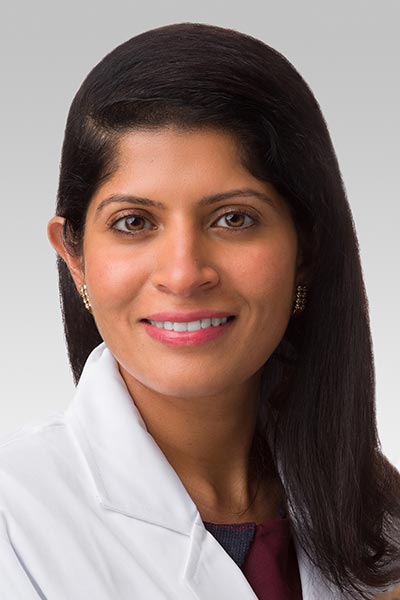COVID-19 has accelerated the proliferation of telemedicine in intensive care units.

“I truly think that the way we practice critical care has evolved, and technology has played a major role in it and will only continue to do so and become more relevant,” said Nandita R. Nadig, MD, MSci, ATSF, chair of the session Bedside to Webside: ICU Telemedicine Meeting the Demands of the Changing Times.
Timothy G. Buchman, MD, PhD, professor of surgery, Emory University School of Medicine, and Dee W. Ford, MD, professor of medicine, Medical University of South Carolina, will co-chair the session on Wednesday, May 18, at 8:15-9:45 a.m. PT in Room 3020/3022/3024 (West Building, Level 3), Moscone Center.
The session will provide a multi-faceted understanding of ICU telemedicine — the delivery of care for critically ill patients by an intensivist from a remote location using electronic transfer of information through interactive audiovisual tools — so participants are better equipped to objectively evaluate whether the technology is a feasible and appropriate solution for their individual hospitals or hospital systems while learning of knowledge gaps in the field.
“This session will provide an understanding of what ICU telemedicine is, what it can do now, and what it can potentially do going forward,” said Dr. Nadig, associate professor of pulmonary and critical care medicine, Northwestern University Feinberg School of Medicine. “Those are aspects I want people to take away and think about in their own setting.”
ICU telemedicine was an innovation adopted to improve access to quality critical care and mitigate intensivist shortages.
“The critical care access gap we talked about 10 years ago is only worse now with attrition of physicians, nurses, and respiratory therapists, so we all need to be thinking about how technology and ICU telemedicine can prevent and help us cope with this access gap,” Dr. Nadig said.
Between 2003 and 2014, only 15 percent of ICU beds in the United States had telemedicine. ICU telemedicine growth in the peri-pandemic world is expected at a rate of 20 percent annually from 2020 to 2026. Dr. Buchman will talk about the evolution and effectiveness of ICU telemedicine during the pandemic.
“That’s going to be, in some ways, our new normal, so this topic of ICU telemedicine was dominant prior to the pandemic, but it’s even more relevant and timely now,” Dr. Nadig said. “And it’s not just for physicians. There is a role for extending nurses, extending respiratory therapists, extending pharmacists with this technology, though ICU telemedicine is never meant to replace a bedside physician or a bedside nurse or respiratory therapists. It’s meant to provide an additional layer of support for them.”
Remote delivery of care in the ICU also can alleviate health care disparities in underserved and rural areas, and even within large health care systems. For example, an intensivist at a quaternary or tertiary level center could provide expertise and consultation to regional hospitals on therapies such as advanced life support devices and evaluation for transplants, and facilitate early transfer to quaternary centers when appropriate to help improve patient outcomes, Dr. Nadig explained.
Indications for how ICU telemedicine should best be practiced don’t exist. So, Dr. Nadig and her faculty will discuss ways to create curriculums for ICU telemedicine going forward, because there are facets to it that are different from doing in-person patient critical care, she said.
Nevertheless, ICU telemedicine is proving to be invaluable.
“There is something to be said about seeing somebody either face-to-face or via technology, rather than through the telephone game that gets played when someone is describing the patient to you,” Dr. Nadig said. “With ICU telemedicine, you can actually see them, and a picture’s worth 1,000 words — that’s true to this day.”
Dr. Ford will discuss the future of telemedicine. Other presenters include Kelly C. Vranas, MD, Isabelle Kopec, MD, and Milagros D. Silva, MD.
Dr. Vranas, assistant professor of medicine in the Division of Pulmonary and Critical Care Medicine at Oregon Health & Science University, will outline strategies for successful ICU telemedicine implementation and future research needs. Dr. Kopec, co-founder of Hicuity Health, will address the sustainability and return on investment related to ICU telemedicine. Dr. Silva, assistant professor of medicine and an attending physician in the Division Geriatrics and Palliative Medicine at New York Presbyterian-Weill Cornell Medicine, will discuss whether palliative care can be provided via ICU telemedicine.
REGISTER FOR ATS 2024
Register today for the ATS 2024 International Conference! Don’t miss this opportunity to take part in the in-person conference, May 17-22 in San Diego. Join your colleagues to learn about the latest developments in pulmonary, critical care, and sleep medicine.
Not an ATS member? Join today and save up to $540.
